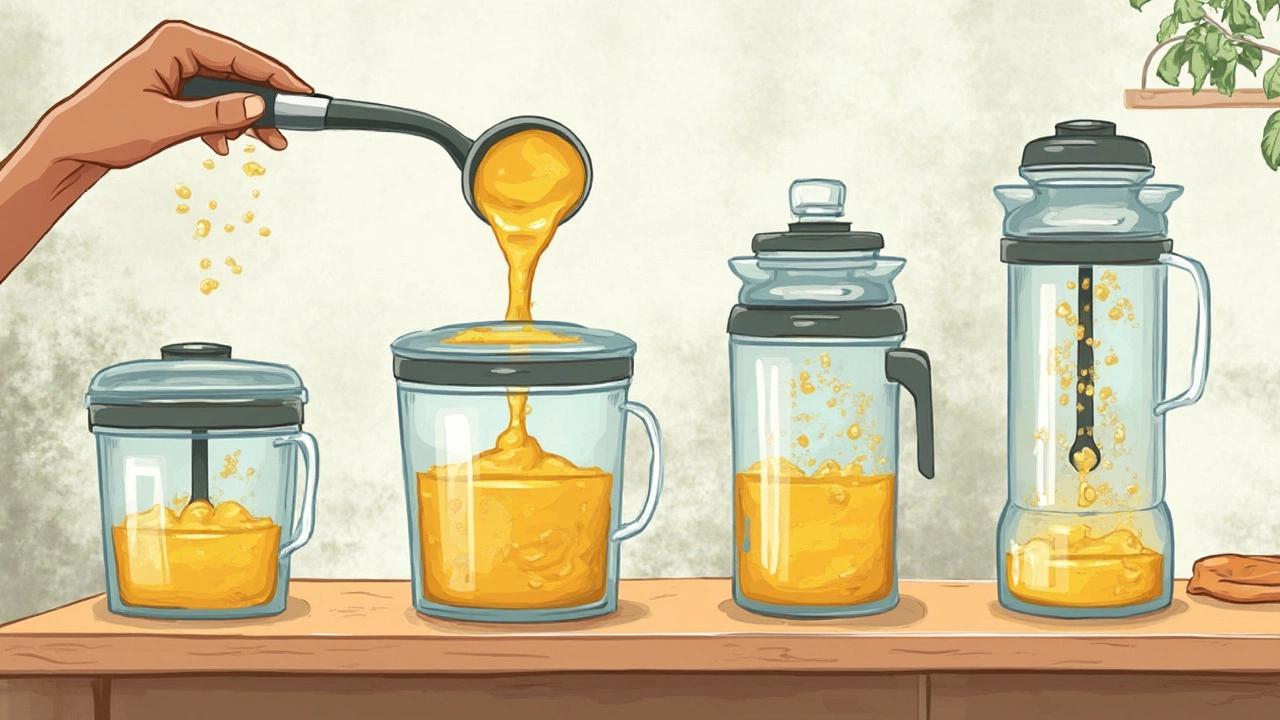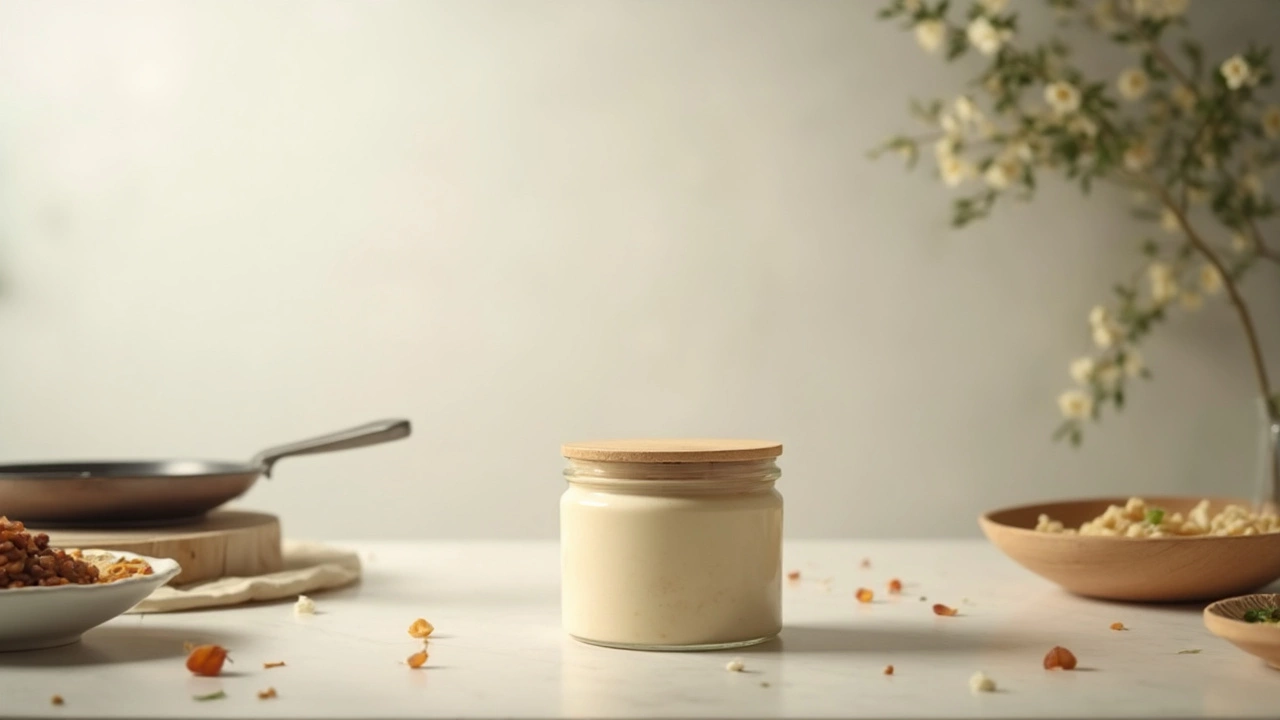Dosa is an essential part of many households, especially if you're as dosa-obsessed as we are. But the big question that often pops up is: how long can you actually keep that homemade dosa batter without it going awry? Well, if you store your batter in the fridge, it usually lasts about 4 to 7 days. Beyond a week, you might be pushing your luck!
A lot depends on how well you take care of that batter. Think of it like a little science project. The fermentation process doesn’t just stop because you put it in the fridge. It slows down, sure, but it’s still happening. So, if the batter gets too acidic, it might be time to whip up some fresh ones.
Now, storing it correctly can make a world of difference. Use an airtight container to keep out unwanted bacteria, and remember to use a clean spoon every time you dip into your treasure trove of dosa delight. If you notice a funny smell or strange color, it’s probably best to say goodbye to that batch and start a new one.
- Storing Homemade Dosa Batter
- Factors Affecting Batter Longevity
- Signs Your Dosa Batter Has Gone Bad
- Tips for Extending Shelf Life
- Creative Ways to Use Old Batter
Storing Homemade Dosa Batter
Keeping your dosa batter fresh and ready to use is super important for whipping up those crispy, delicious dosas any time you want. When it comes to storing it, the fridge is your best friend. Make sure the batter is placed in an airtight container. Why? Because you want to keep out all the funky odors and bacteria that could ruin your batter.
Here's a little tip if you're planning on using the batter over a few days: divide it into smaller portions in separate containers. This way, you don’t have to risk introducing contaminants each time you scoop a little out. And speaking of scooping, always use a clean spoon to avoid cross-contamination.
Temperature is another crucial factor in storing your homemade dosa batter. Keep it at the coldest part of your fridge, typically at the back, where the temperature remains stable. Consistency is key to ensuring that the fermentation process doesn’t run wild. If your fridge is looking more like a science experiment than a food storage area, it might be time for a clean-up.
Want a quick insight into storage longevity? Check this out:
| Storage Condition | Longevity |
|---|---|
| Refrigerated in airtight container | 4-7 days |
| Refrigerated, opened frequently | 3-5 days |
Keeping track of when you made the batter is also wise. A small label with the date can save you from any guessing games later. Just pop it on the lid when you first store it.
Remember, while the fridge helps slow down fermentation, it doesn’t stop it entirely. So trust your senses. If the batter smells sour or has weird colors, it’s probably not safe to eat. With these steps in mind, you're set to keep that homemade dosa batter in top shape, ready to impress your taste buds and maybe even your family or guests!
Factors Affecting Batter Longevity
There's more to keeping your dosa batter longevity intact than just tossing it into the fridge. Various factors can change how long your batter stays ready for action.
First off, let's talk about the weather. Yup, that’s right. During hotter months, your batter's fermentation might go on overdrive, even in the fridge. On the flip side, cooler temperatures can keep it fresh longer.
Then there's the question of ingredients and proportions. If you've added extras like fenugreek seeds or poha, these can speed up fermentation, making the batter too sour if stored for too long.
The cleanliness of your tools matters too. Always use clean utensils when handling your homemade dosa batter. Cross-contamination with other foods can spoil your batter faster.
Here's something you might not have thought of: the quality of water. Using filtered or boiled water helps maintain the homemade dosa batter's freshness. Tap water can sometimes contain impurities that could mess with the batter.
Finally, how you store your batter plays a big role. An airtight container is your best friend here. It keeps out unwanted bacteria and keeps the moisture in check.
| Factors | Effect on Batter |
|---|---|
| Weather | Hot & humid conditions speed up fermentation |
| Ingredients Used | Additional items like fenugreek increase acidity |
| Cleanliness | Contamination can spoil batter quickly |
| Water Quality | Tap water may reduce freshness |
| Storage | Airtight containers prevent spoilage |
Keeping these factors in mind can really help when trying to preserve that preserving dosa batter goodness!

Signs Your Dosa Batter Has Gone Bad
Dosa lovers know that a good batter can make or break the experience. But what happens when things go south? Here's how you can tell if your dosa batter isn't fit for your skillet anymore.
Smell: Trust your nose. The batter should have a mild fragrance. If it's giving off a sour smell that's more aggressive than usual, that's a clear sign it might be past its prime.
Color Change: Watch out for any unusual color, especially if it turns a shade darker or has spots that don't look right. Fresh batter has a consistent white or off-white color.
Texture: If you reach for the batter and it feels excessively frothy or watery, it probably means it's over-fermented. A good batter has a smooth, somewhat thick texture.
Mold: Spotting mold is a surefire sign to chuck the batter. Mold loves moisture, and sometimes cold storage isn't enough to keep it away.
Keeping an eye on these indicators can save your dosa dreams from turning into a nightmare. A small sniff and a quick look can prevent a potentially unappetizing meal.
Tips for Extending Shelf Life
Alright, so you want to make sure your dosa batter stays fresh and tasty for as long as possible. Good call! Here are some solid tips to help you get the most out of your homemade fermented batter. Follow these steps, and you'll have dosas ready whenever the craving hits.
- Use a Clean, Airtight Container: Seal the batter in an airtight container to minimize exposure to air and dodge those pesky bacteria. It’s like putting your batter in a little safety bubble.
- Watch the Temperature: Store it in the coldest part of your fridge. A consistent cold temperature slows down fermentation, preserving the batter’s freshness.
- Use Clean Utensils: Always use a clean spoon when scooping batter. A little bit of leftover food or moisture in the spoon can spoil the batter faster than you can say 'dosa loving'.
- Add a Pinch of Salt: Just before storing, sprinkle a bit of salt. It acts like a natural preservative, keeping your homemade dosa batter from getting too sour too quickly.
- Portion and Freeze: If you’ve made a large batch, consider freezing some. Pour them into portions you can use later. This way, you only defrost what you’ll use.
If you really want to up your game, here's a nugget of wisdom from Sheela Prakash of Kitchn:
“Keeping batter fresh is half the battle won. Properly stored, it becomes a multitasking ingredient that brings authentic flavors with minimal effort.”
Sometimes, a little planning can make all the difference. Trust these tips for great dosas every time, without a hint of spoilage to rain on your parade.

Creative Ways to Use Old Batter
So you've got some homemade dosa batter that's been lingering in your fridge a bit too long, but it still looks and smells okay. Don't just toss it; there are plenty of inventive ways to give that batter a second lease on life!
First off, think beyond the usual dosa. How about using that batter to make some crispy uttapams? Just add a handful of chopped veggies—like onions, tomatoes, and bell peppers—to the batter, pour it onto a hot skillet, and cook it until it's golden brown.
If you're in the mood for something different, you can transform the batter into some delicious paniyaram. All you need is a paniyaram pan and some creative fillings. Add diced vegetables or even leftover meats to the batter, pour it into the pan, and cook until each ball is perfectly crispy on the outside.
Got a sweet tooth? Mix in some banana and a pinch of sugar to your fermented batter and make sweet dosas or pancakes. It's a great way to turn potential waste into a tasty breakfast treat.
For a crunchy snack, try making savory fritters. Just add in some spices like cumin, coriander seeds, and a bit of chili powder to the batter. Deep fry spoonfuls of this mix until they're golden brown. Serve them hot with a spicy chutney for a perfect teatime snack.
Lastly, don't underestimate the power of a good makeover! If your batter seems slightly sour but still usable, blend in some fresh batter or rice flour to balance the flavors. This little tweak can often bring your dosa batter back to life.
These ideas not only save food from being wasted but also offer a chance to experiment with new flavors and textures. So next time you're eyeing the aging batter, remember, with a pinch of creativity, that leftover can turn into something totally delicious.
| Recipe | Ingredient Adjustment | Cooking Method |
|---|---|---|
| Uttapam | Chopped veggies | Skillet cook |
| Paniyaram | Veggies/meats | Paniyaram pan |
| Sweet Dosas | Banana, sugar | Skillet cook |
| Fritters | Spices | Deep fry |
